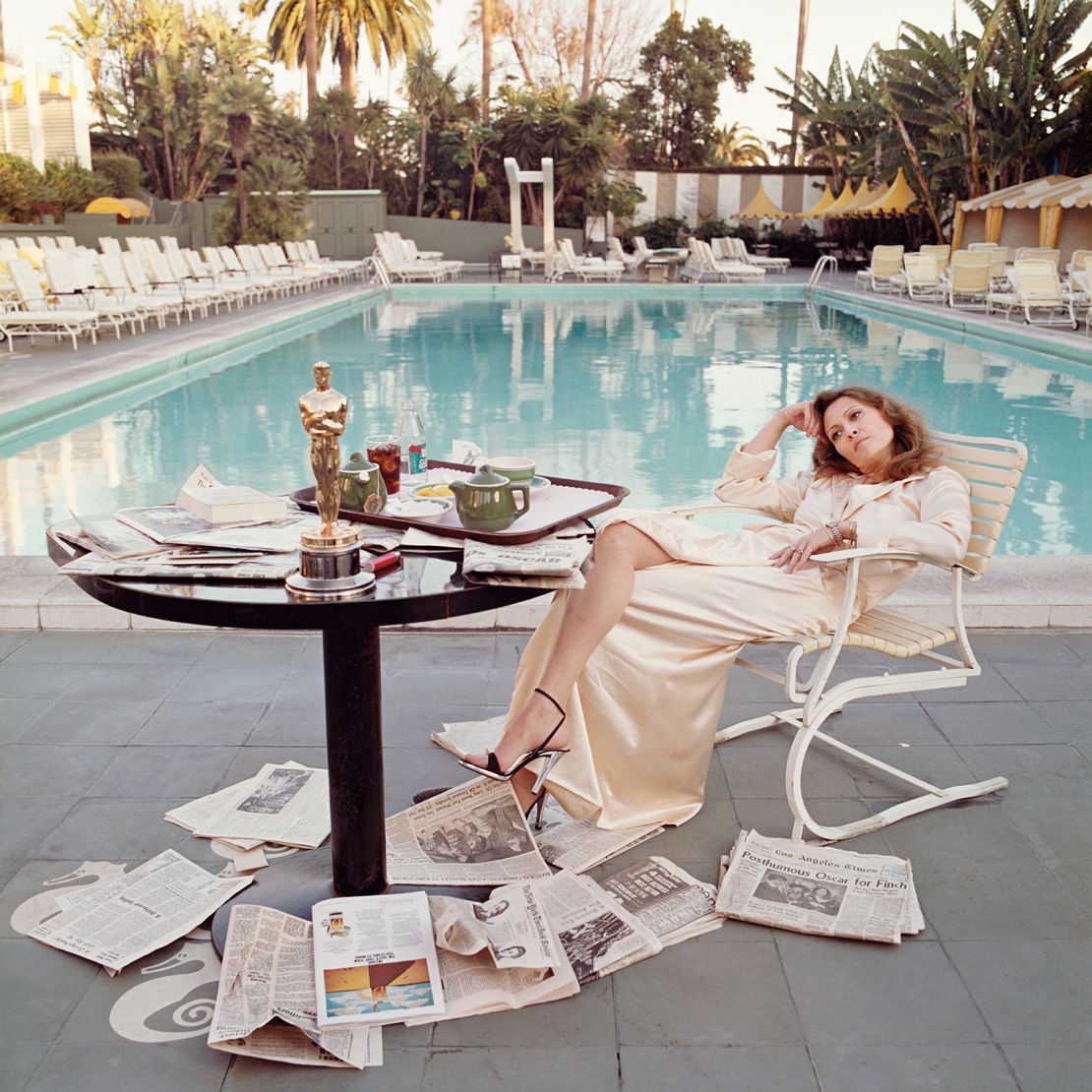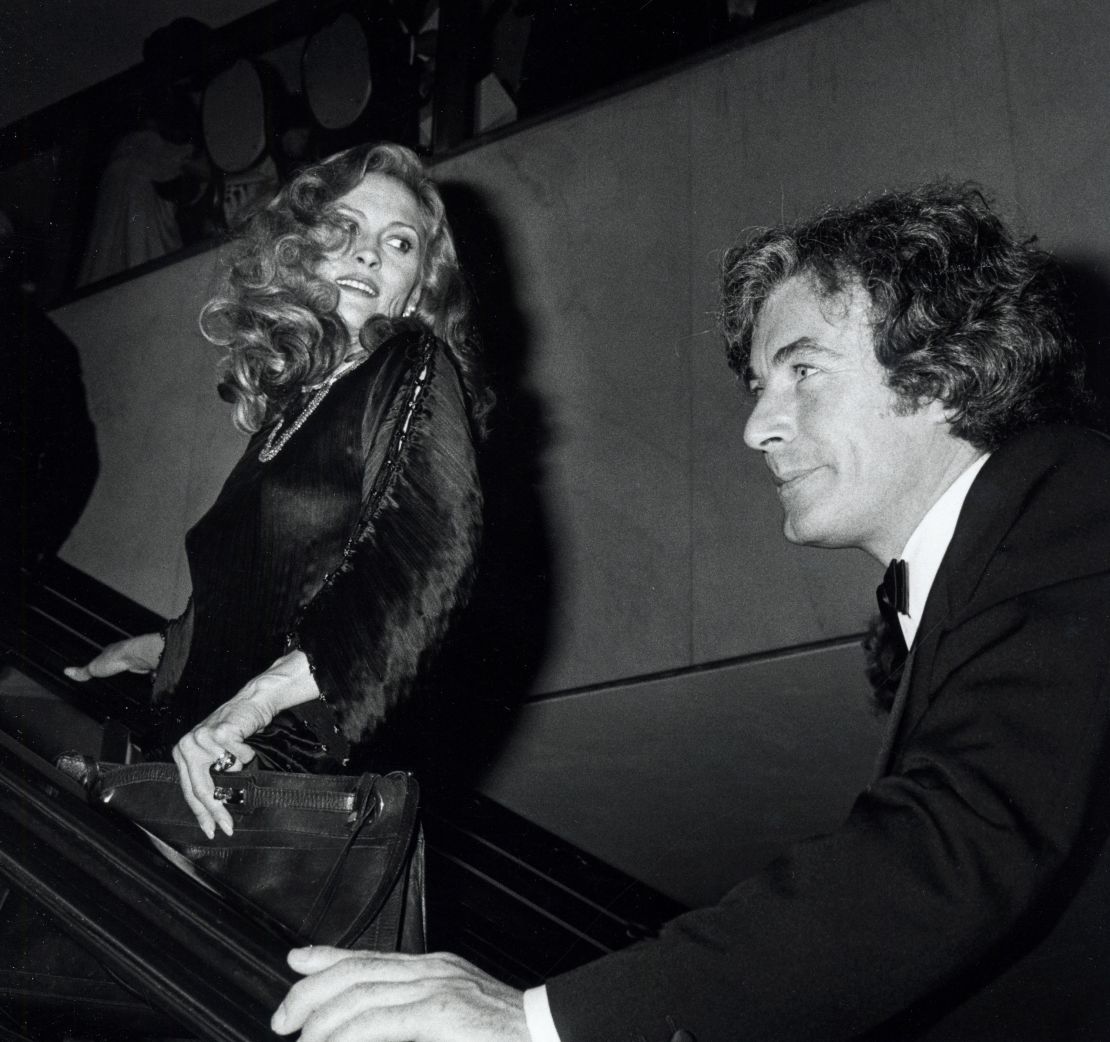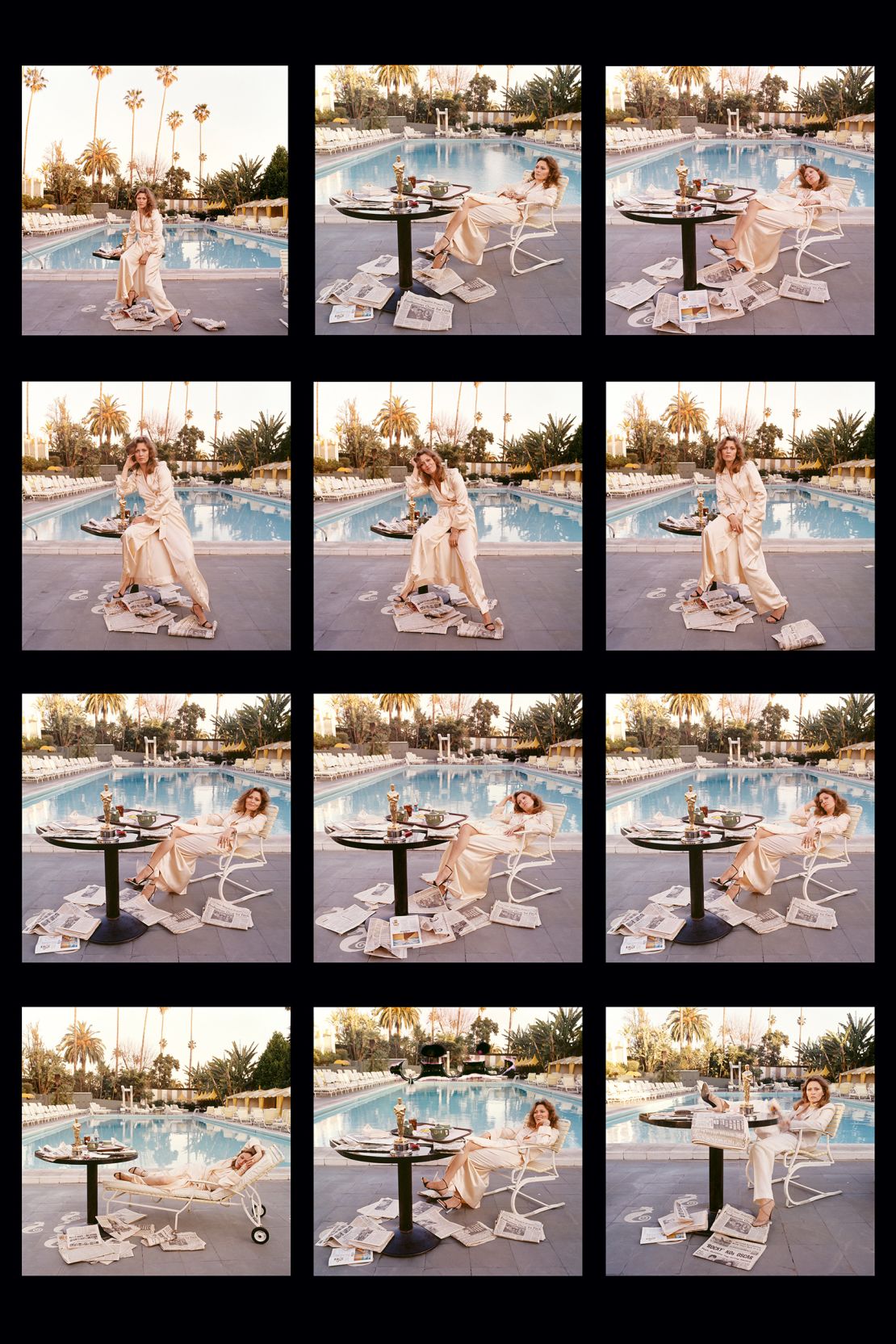
Editor’s Note: In Snap, we look at the power of a single photograph, chronicling stories about how both modern and historical images have been made.
In just 10 minutes, photographer Terry O’Neill snapped one of the most recognizable celebrity portraits of the 20th century — Faye Dunaway, poolside at the Beverly Hills Hotel, on the morning after her 1977 Oscars win.
Dunaway had nabbed Best Actress for the film “Network,” after two earlier nominations left her empty-handed. In O’Neill’s image, taken around 6 a.m., the statuette sits on a table beside the actor, the morning papers scattered around her. Dunaway was running on little sleep; the festivities had given way to a new day in which her life had radically changed. (Dunaway and O’Neill eventually married in 1983, but they divorced a few years later.)
“I wanted to capture that moment — the morning after — the moment the actor wakes up and it dawns on them that, overnight, they’ve not only just become a star, but also a millionaire,” O’Neill is quoted as saying in “Stars,” a posthumous retrospective of his work at the photography museum Fotografiska in New York. “This is that moment of realization.”

“Stars” spans five decades of O’Neill’s career, charting his path from British tabloid snapper to one of the most trusted names in the world of editorial photography. Some of his most famous images include a windswept Brigitte Bardot smoking a cigarette, Mark Hamill as Luke Skywalker with one protective arm around Carrie Fisher as Princess Leia, and The Beatles recording “Please Please Me” on the cusp of their whirlwind fame.
Robin Morgan, the former editor of the Sunday Times Magazine in London, commissioned Terry O’Neill often because “his name opened doors,” he said to CNN in a phone interview. Morgan became close friends with O’Neill and began organizing his archive of hundreds of boxes of negatives late in the photographer’s career (O’Neill died in 2019 at age 81).
‘Honest and alluring’
Morgan believes O’Neill’s photograph of Dunaway has endured because of the simplicity of the moment — something he thinks has disappeared in the industry as photo shoots have become highly coordinated affairs, where major celebrities have carefully curated public personas.
“What we love about (the photo) is that we kind of feel it couldn’t happen today, right?” he mused. “It’s a moment in time that is honest and alluring.”
O’Neill had met Dunaway years earlier on the set of the 1975 film “Three Days of the Condor,” according to Morgan, and they worked in the same circles. In an interview with The Cut in 2015, O’Neill said he had pitched the idea of the post-Oscars image to Dunaway during a shoot for People Magazine that predicted her win.
“I said to her, ‘I’ve been to the Oscars before. If you win, they always take the same pictures of you receiving the statue in the press room,’” O’Neill had recalled. She agreed and turned up, which Morgan said was a credit to his easy charm.

“Stars” shows both iconic and rarely seen photographs, as well as new versions of familiar scenes. The published photograph of Dunaway shows her pensive, her head in her hand as she seemingly contemplates the gravity of her accomplishment. But the exhibition shows the full roll of film, with 12 images on a contact sheet. In some images, she’s sitting on the table with her Academy Award, eyes locked on the camera. In others, she’s audacious, one leg hoisted across the table, or exhausted, her arm draped over her face as she lays back with her eyes closed.
Altogether, the show includes 170 of O’Neill’s images, the vast majority of which have never been exhibited.
“When I started to work with Terry… there were only maybe 10 or 15 photographs that he showed in exhibitions,” Morgan said. Now, “we have over 400 of his photographs in circulation around the world out of a million-plus negatives. It’s such a rich archive.” He added: “There will be a never-ending supply of new and unseen Terry O’Neills to come.”
“Stars” opened at Fotografiska in New York on June 2.